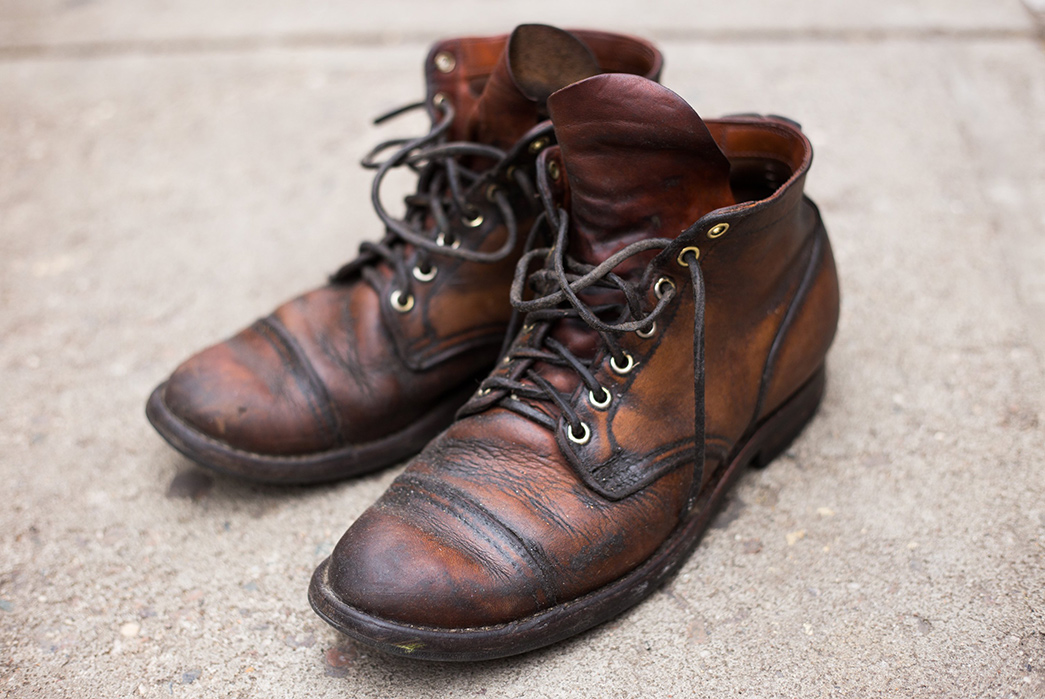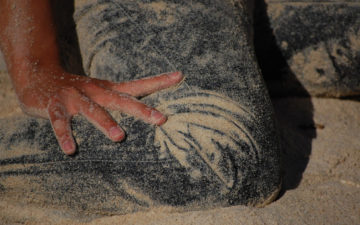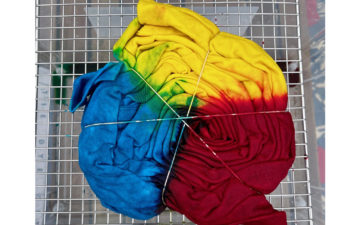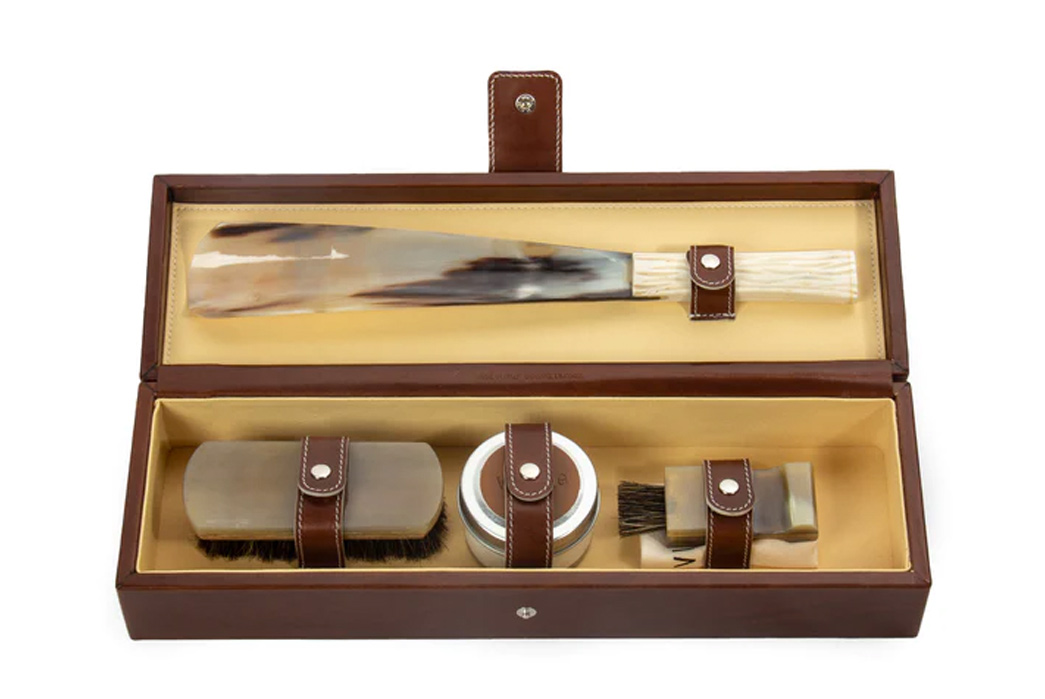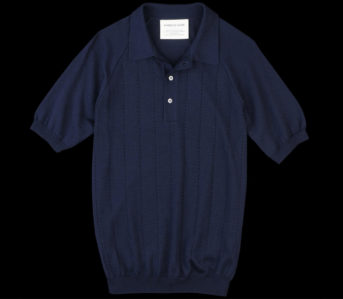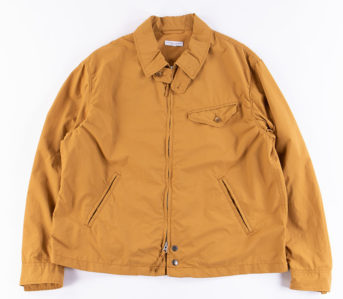I’m sure there are plenty of you who are already rolling your eyes as you click your way to this article. The eye-rollers have probably got their boot break-in figured out already, but for every skeptic, there are many more fresh feet who may be seduced by some of the less prudent break-in methods advertised online.
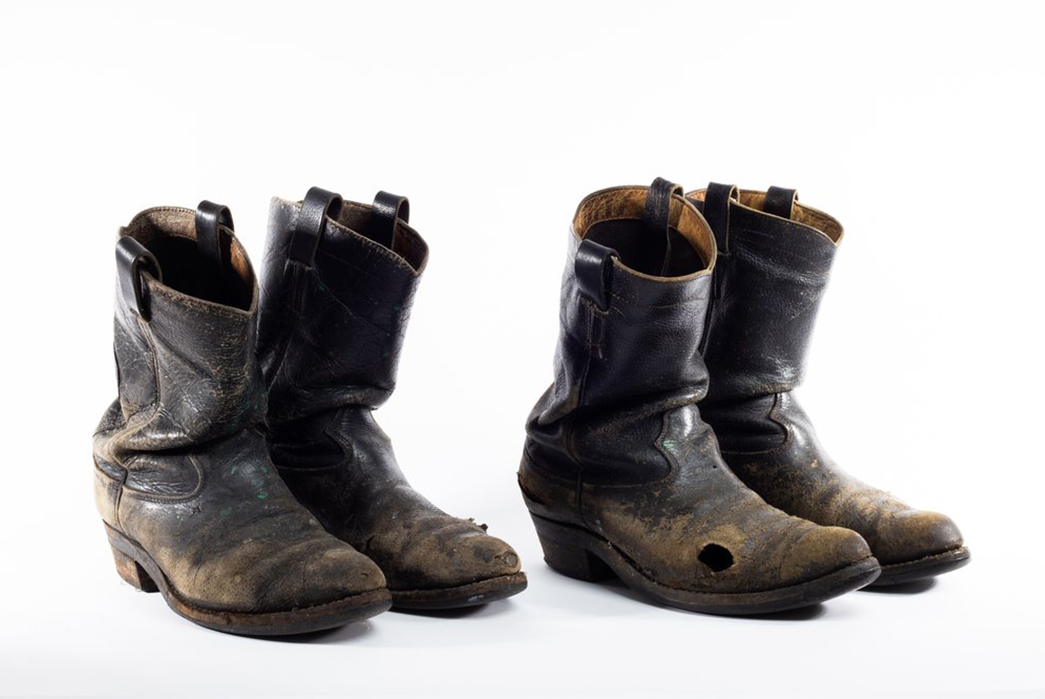
Soft, soft boots. Image via Viberg.
The thing about new boots, as with new jeans, is that they will take some work. Pure and simple. And while there are a handful of minor shortcuts, it’s really all about getting a tough piece of hide to slowly conform to your feet. We live in an era of instant gratification, where we can get just about anything we want at any time.
Pair this with a society long steeped in a world of fast fashion and the fact that most of us wear comfy, padded sneakers most of the time, we’re simply not used to a product that requires blood, sweat, and tears to make perfect. The journey of breaking in a pair of boots is a deeply personal one, but it doesn’t have to be all that difficult.
We’re walking you through how to break in your new boots.
How to Break Your Boots in Right
DO Buy High Quality
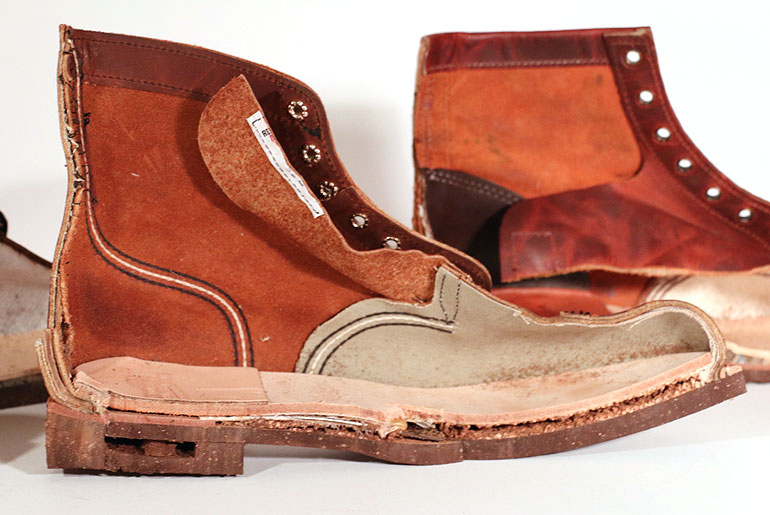
If you’re going through the blood, sweat, and tears it takes to break in a pair of leather boots, you want your efforts to be worth it. The whole joy of breaking through those first few weeks is that the pair on your feet will be much more valuable to you than anything new off the shelf, so try to make sure you have a quality pair to start.
Our entry level pick is the Red Wing Iron Ranger, which has a modest break in period, a full-grain and oil-tanned leather upper, and a Goodyear welted recraftable sole, so a pair that’s treated right can last decades. You can read more about why we picked it in our full cutdown review here, or if you’d like to check out other options for what the wide world of boots has to offer see our guide to the Three Tiers of Welted Footwear.
DO Get The Right Fit
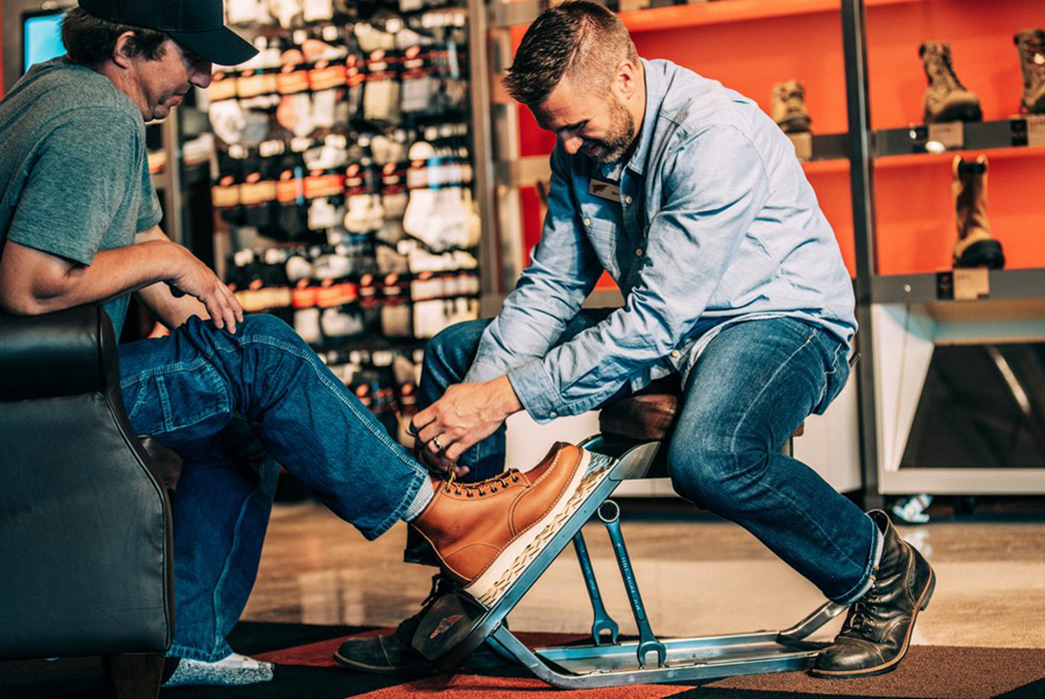
Image via Red Wing
The most important piece to breaking in a pair of new leather boots comes before you’ve even purchased them. It’s imperative that you get the sizing absolutely correct before you begin the break-in process. When you get a new boot on your foot, it should feel stiff, but still good. If a shoe feels like a leather foot prison, don’t kid yourself—that won’t change. When making a major investment like a pair of leather boots, it’s always best to make the purchase in person. I know that it’s hard to wait, but it’s always better to cool your heels and wait until you can see it’s actually going to work for you.
A lot of advice has to do with stretching boots that are too tight. You can avoid most, if not all, that nonsense by nipping this issue in the bud. If you can’t go to a specialty boot shop in person, at least shop somewhere that’ll let you return your impulse buy without too much hassle. I’ve certainly made the mistake of trying on a pair that was more-than-snug and thinking, “Oh yeah, I’ll stretch these out” only to end up selling them or giving them away.
Everyone’s feet are different, so lock down a size and last that work for your foot and you should be good to begin breaking them in earnest.
DO Wear Them Around The House
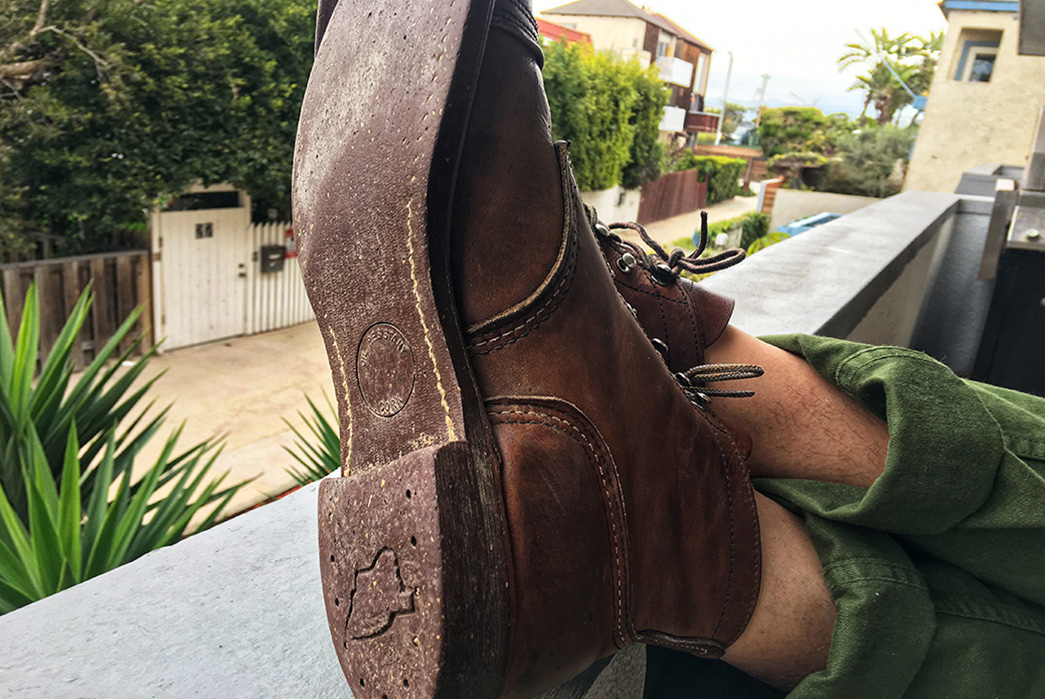
Kick back a little. Image via Heddels.
Depending on your pain tolerance and personal life, you may not want to just start wearing your crunchy new boots out and about. You also may not like the way they start out, all new and shiny. A great course of action is to start wearing your boots around the house in small doses. The boots will hurt for a couple of days no matter what, but if you space out that wear-time over a longer period and in the comfort of your own home, it won’t be so bad.
You should try to enjoy this period, even though you may be uncomfortable. Your boots will never be this clean and pristine again! Memorize the way they look, so you can treasure every scuff and crease you gain over the next couple years. You’re in for a treat. Or, you can document your journey and send them over to us for a Fade Friday feature.
DO Get Comfortable, Thick Socks
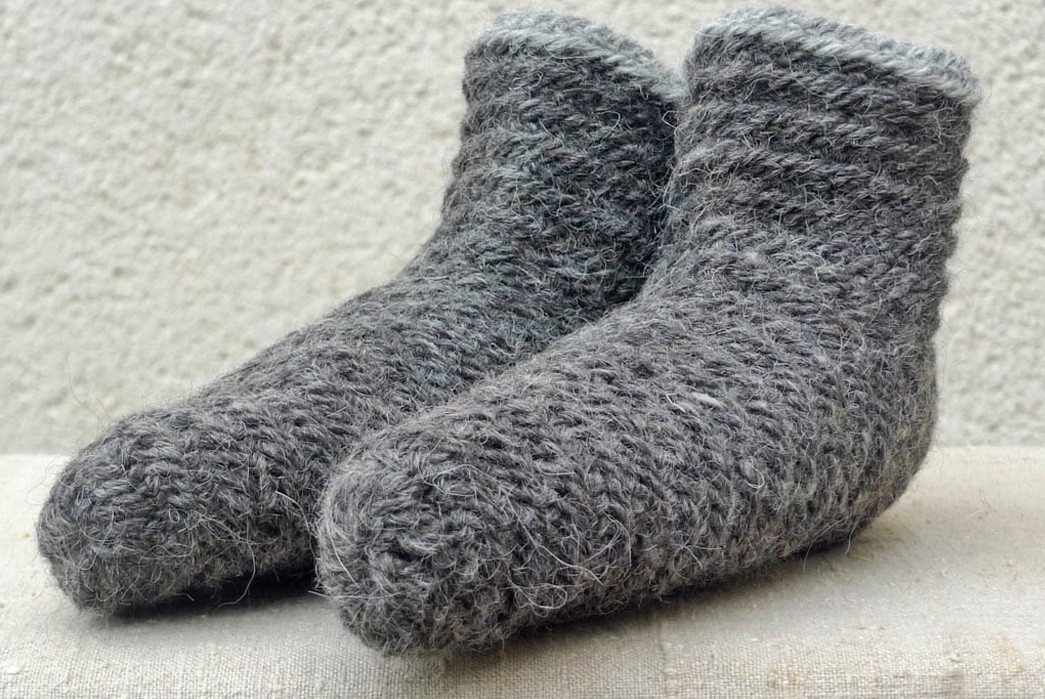
Reproductions of medieval long socks, you probably don’t want something this thick. Image via Marchand Medieval.
This may not be an issue for our northern and cold weather-savvy readers, but for those of you breaking in new boots in milder climates, you’re gonna need new socks. Sure, after you’ve had your leather shoes or boots for a while, you can wear any old Hanes sock with ’em, but when they’re as stiff as the box they came in, you’re going to need a little extra protection.
The early days of breaking in a pair of boots aren’t just about creasing and softening the upper, it’s also about getting the midsole to conform to your unique arch. Basically, at this early stage, your foot is being assailed from above and below, so a little extra cushioning can’t hurt. Heavy cotton socks or a light Smartwool are both good options, but there’s no perfect answer. Whatever feels best within your budget is all you need. And, thicker socks can even help stretch the leather more, speeding up the break-in process.
DO Condition Them
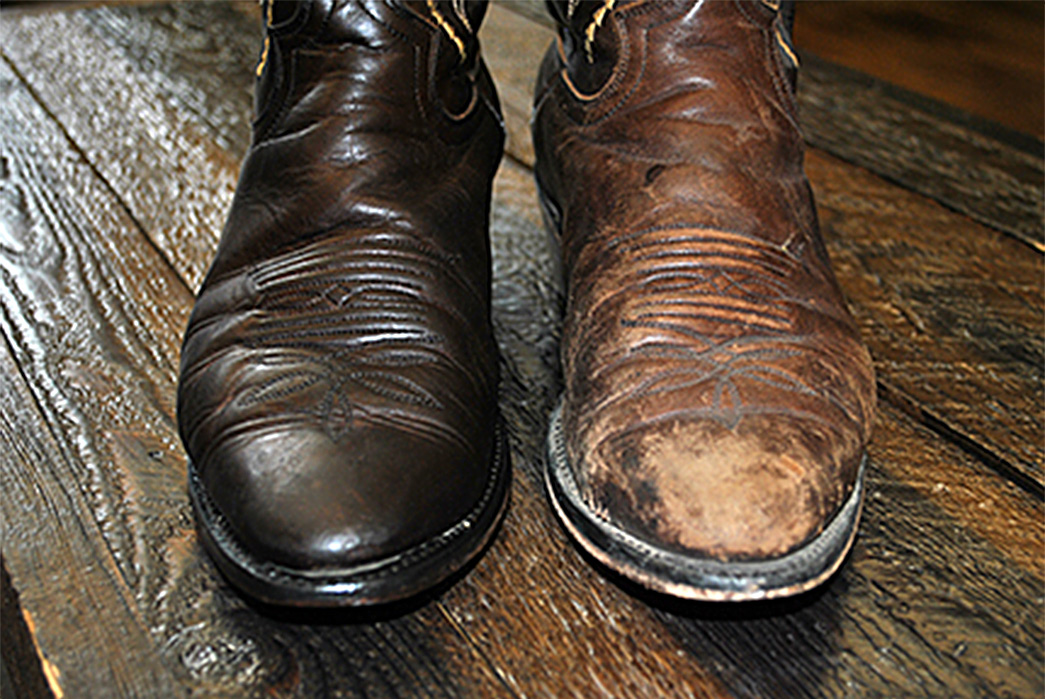
Oiled and un-oiled boots. Image via Blog.Murdochs.com
Leather is just another type of skin. And, like your own skin, it needs to be moisturized every so often. Moisturizing is very important to extend the longevity of your boot, especially if you live in a harsh climate with rain, snow, and the omnipresent salt on the roads.
While you don’t necessarily need to apply conditioner to your boots for a fairly long time, Red Wing recommends 100 wears, it would technically soften up your boot a bit. Not only will leather conditioners extend the life of your boots overall, they can help soften the leather, making the break-in a bit easier on your little piggies.
Everyone has a personal favorite when it comes to conditioning their boots and though some recommend coconut oil, lotion, and even hair conditioner, it’s safer to stick with a leather-specific product. Most brands make their own oils, creams, and conditioners; but it can never hurt to use mink oil. If you really want to go all out, head over to the shoe care section at Viberg to see their full range of creams, brushes, soaps, and conditioners.
What NOT to DO
DON’T Submerge Your Boots in Water
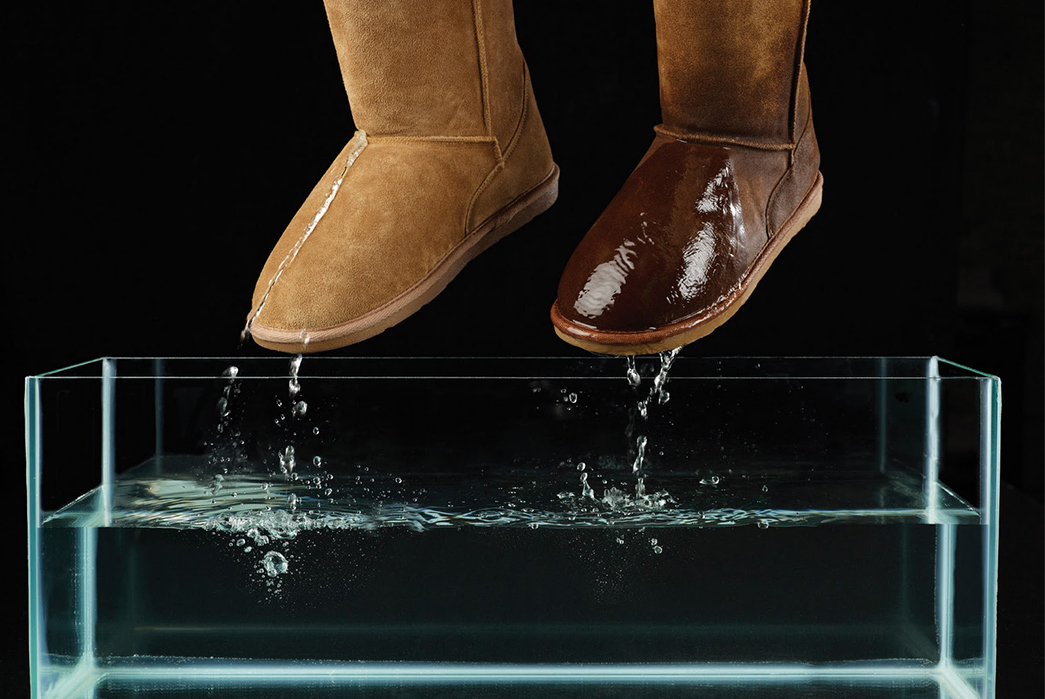
Spoiler Alert. Don’t do this. Also, don’t buy UGGs. Image via Walking Shoes.
The following is a common break-in tip you’re likely to see, but one that we do not endorse. There are plenty of variations on this theory, either to fully submerge the boots, partially soak them, or even wear them around for a day with wet socks. The issue is that, though leather can stand a certain degree of moisture, it’s ultimately not great for your boots. Though it sounds counterintuitive, water can actually dry out your leather boots, eventually leading to greater problems like cracks and tears.
Some could argue that the leather is soaked with water during the manufacturing process, so it can’t be bad. But that’s done in a very contained environment by people who know what they’re doing. If you feel passionate about soaking your new $300+ boots in water after you buy them, by all means, go ahead. We’re just here to let you know that we don’t approve.
DON’T Heat Em Up
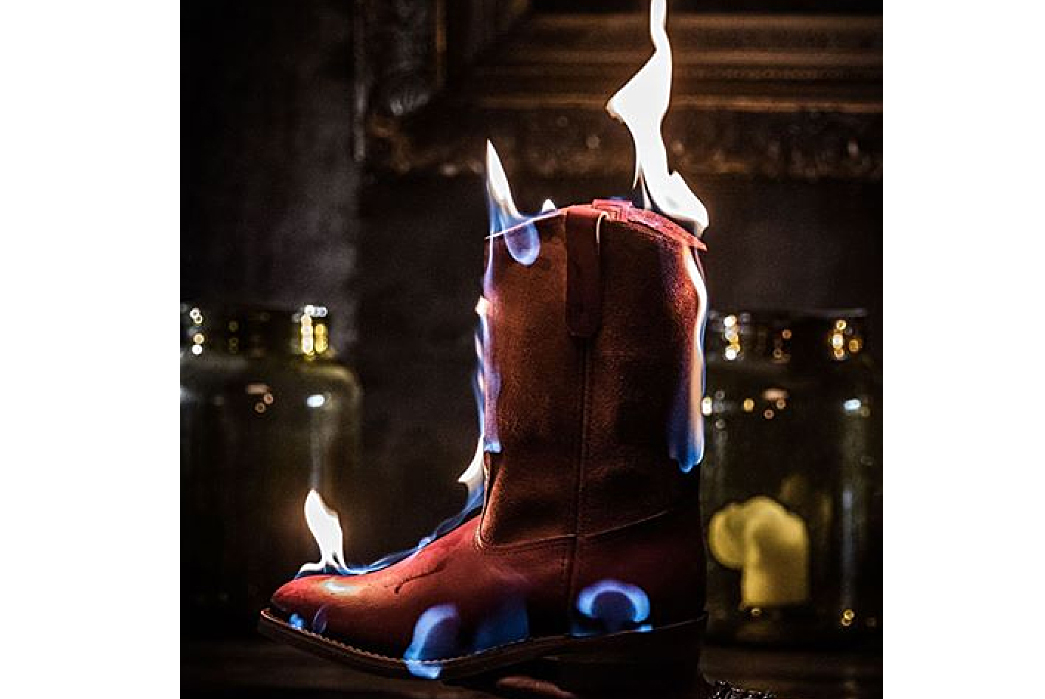
Eat Dust Pecos Boot ON FIRE FOR SOME REASON. Image via PicClick
It’s perhaps beginning to register that some of the more extreme break-in techniques are questionable at best. This is true of the heat ’em up genre of life hacks. People have suggested putting them in the oven, steaming them, and even blow-drying them; but the fact of the matter is…just don’t.
While heat could feasibly soften leather, it also dries it out, which is the only thing you shouldn’t do to leather. That’s why leather conditioners are so important. While, theoretically, careful heating could soften parts of the boot, the long term effects are potentially far worse. You really shouldn’t have a boot that fits you so badly that you’re resorting to such drastic measures anyway.
DON’T Wear Them Every Single Day
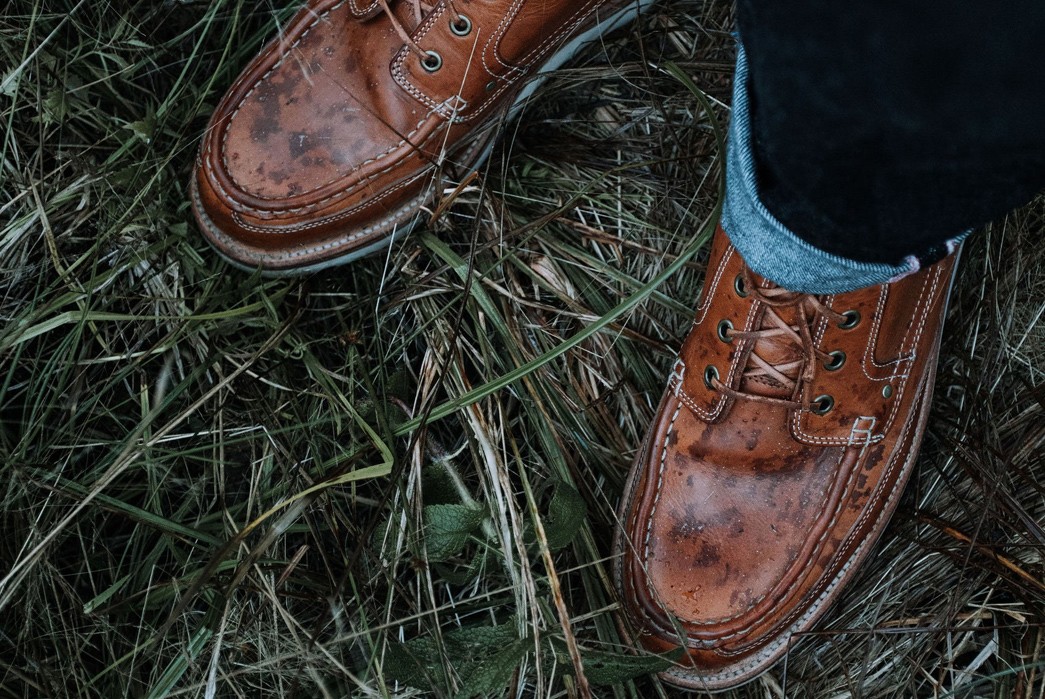
We know, once you and your boots have made that special break-in bond, you may never want to part with them. But the love that burns brightest, burns fastest and your leather footwear friends really need some alone time.
Your feet sweat, some more than others, and the leather in your boots absorb a lot of that moisture and need time to dry out in between wears. If you don’t give them sufficient time to recover, everything about them will begin to degrade faster and maybe even start to mildew.
A good rule of thumb is to give at least one rest day after each wear day to ensure long term health.
Conclusion
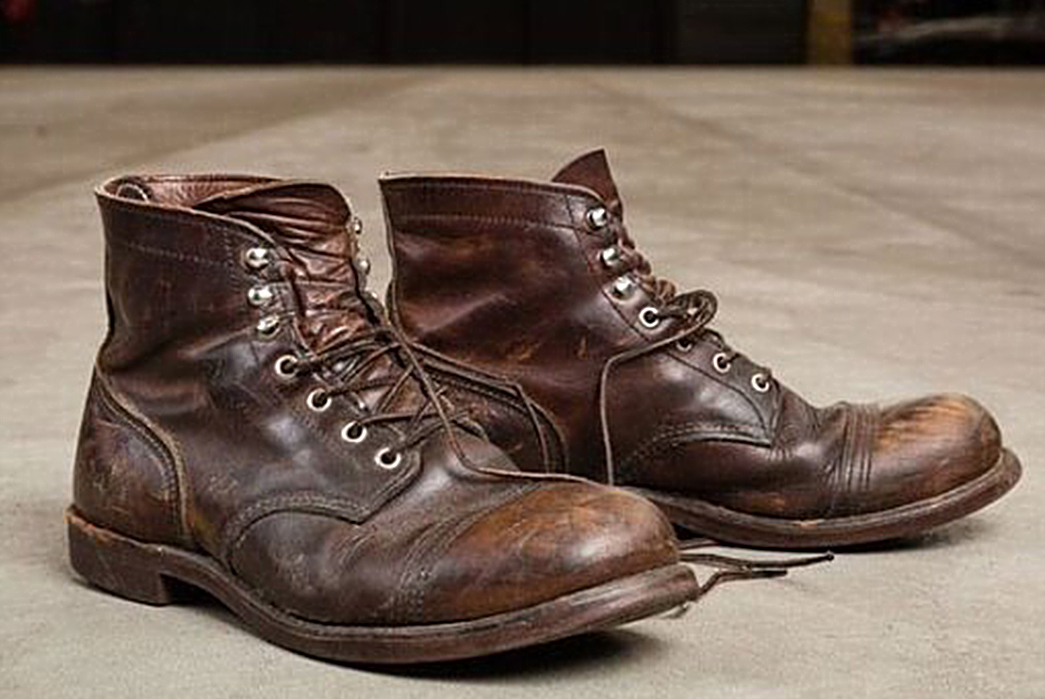
Image via Red Wing Sweden.
New boots are almost exactly like raw denim. You can sweat the initial discomfort and try to cut corners, but the fact of the matter is that you’ll be wearing these things for a long time before they start to look like those inspirationally beat-up pairs you see on Instagram. Though we’re eager to get to our destination, try to enjoy the journey. You spent a ton of money to buy a pair of boots from one of the world’s top manufacturers, so don’t baby them while you wear them and ironically don’t destroy them while they’re off your feet with cockamamie schemes.
Do your due diligence and find a boot made from a leather that’s right for you. A slow-aging rich cordovan, a nuanced roughout, or maybe a quick-to-patina veg-tan. When that’s done, make sure the boot feels good on your feet and you’re all set. We sincerely hope you enjoy your journey and that you didn’t roll your eyes too much.


